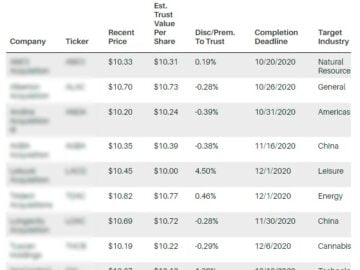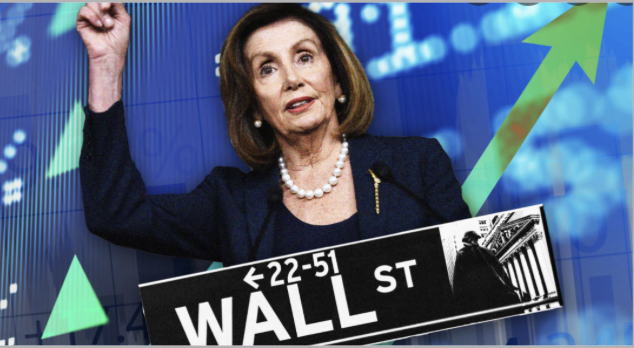Seeking out great stocks to buy is important, but many would say it’s even more essential to know which stocks to steer clear of. A losing stock can eat away at your precious long-term returns. So, determining which stocks to trim or eliminate is essential for proper portfolio maintenance.
Even the best gardens need pruning, and our team has spotted a few stocks that seem like prime candidates for selling or avoiding. Continue reading to find out which three stocks our team is staying away from this week.
Rising interest rates are cooling off the entire housing sector, with mortgage applications in their fourth month of decline, dropping to the lowest level since 1997. The 30-year fixed mortgage rate recently hit 7.23% – the highest level since 2002. Home resales are sitting at a two-year low. According to the latest data from the U.S. Department of Housing and Urban Development, new residential construction fell 8.1% month over month across the U.S. in September. More pain is expected as the Federal Reserve is widely forecast to continue lifting interest rates through the remainder of 2022 and into 2023 to dampen inflation.
As the largest homebuilder in the U.S., Texas-based D.R. Horton (DHI) is likely to be impacted by the slowdown in the housing market. DHI’s share price is down 33% already this year, outpacing the decline of the S&P 500. As the housing market slows further heading into winter, more declines can be expected. The company has been slowing its number of housing starts in response.
In its most recent Q3 earnings, D.R. Horton forecasted a slowdown, saying it now expects full-year revenues in the range of $33.8 billion to $34.6 billion, down from its previous guidance of $35.3 billion to $36.1 billion. The company also reported a Q3 cancellation rate of 24%, up from 17% the previous year. With increasing analysts predicting a housing recession, the company could be forced to further lower its earnings forecast.
Headwinds against e-commerce car vendor Carvana (CVNA) had already been intensifying before the sizable ramp-up to its vehicle inventory in the first quarter. Management recently admitted that it accelerated its car-buying business at the wrong time during a worsening economic environment, causing investors to flee the stock in search of greener pastures. CVNA could continue to burn through cash at an alarming rate as it faces threats to the value of its inventory.
“It has become clear over the past few months that the company is facing serious challenges to the business,” Morgan Stanley analyst Adam Jonas wrote in a note to clients after he downgraded CVNA to Equal Weight from Overweight and slashed the price target by 70% to $105, down from $360. “By the company’s own admission, it had accelerated growth at precisely the wrong time into a consumer slowdown leaving a major mismatch between capacity and demand, creating a liquidity crunch,” he continued.
The company’s liquidity issues are likely to be compounded as the Fed boosts benchmark interest rates, making it more expensive to take out loans. With its business model, Carvana is also at risk of declining used car prices as that would devalue its inventory, and a pullback in prices is likely as interest rates rise.
During Carvana’s most recent quarterly announcement, the company reported a bigger-than-expected quarterly loss and revenue that beat analyst expectations. Results showed a $1 billion increase in equity along with $3.275 billion in debt.
Carvana may look like a bargain, down 97% from its ATH just over a year ago. Still, with interest rates rising and growing concerns of a looming economic recession, the company could be further wrung out as economic growth slows.
Inflation is taking a heavy toll on input costs for digital printing company Xerox (XRX), all while supply-chain disruptions are impeding the company’s ability to manufacture higher-margin products. XRX has lost 37% of its value since the beginning of the year. Anyone looking for a reason to buy on the dip of this long-time laggard would be hard-pressed to find one.
Xerox stock has carried a consensus Sell recommendation for more than a year. Zooming out on XRX’s chart, it’s not hard to see why. The stock has underperformed the broader market by drastic margins in five of the past seven years. According to the pros, there’s little reason to see it snapping the losing streak anytime soon.
“Prior to the pandemic, Xerox had faced pressure from the rise of the paperless workplace and the corresponding decline in imaging equipment revenue,” writes Argus Research analyst Kristina Ruggeri (Hold). “The increase in work-from-home practices during the pandemic further accelerated this trend.”
XRX currently boasts an attractive 7% yield, but it’s hardly enough to make up for the questionable path that the company has been on. We’ll be sticking to the sidelines for the foreseeable future.
You might also like:
- Mysterious Gold Leverage Just Announced
- Elon’s New A.I. Device is About to Shock the World
- Prepare Now Before This Looming $2 Trillion D.C. Shock
- Buy Elon Musk’s New $1 Play before June 30
- Write this ticker symbol down…
- The Crypto Melt-Up has Begun
- “A.I. is a Tidal Wave” – Here’s What to Buy
- Beware Executive Order 14067
- #1 AI Stock for 2024 and Beyond
- Bank plague 2024
NEXT:
Get Free Stock Picks via SMS by Signing Up Below!
I would like to receive timely trade ideas and stock watchlists from Wall Street Watchdogs at the phone number provided. Message frequency varies. Message and data rates may apply. Reply HELP for help or STOP to cancel.(Watchdogs SMS Terms of Service & Privacy Policy)























